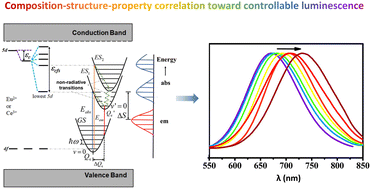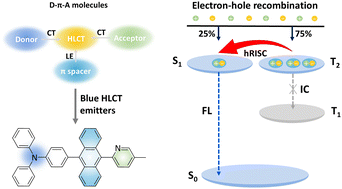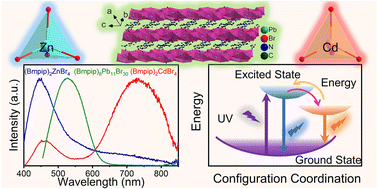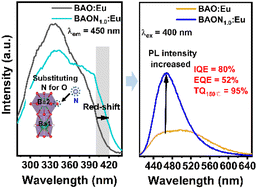Inorg. Chem. 2023, 06, 13, 10021–10028, https://doi.org/10.1021/acs.inorgchem.3c01405

The discovery of violet-excitable blue-emitting phosphor is a significant breakthrough for the development of phosphor-converted full-spectrum white light-emitting diodes (WLEDs). However, the application of most known violet-excitable blue-emitting phosphors is limited by their low external quantum efficiency (EQE). In this work, we reported on how the EQE values of Eu2+-doped Ba(K)-β-Al2O3 blue-emitting phosphor can be significantly improved through lattice site engineering. By partially substituting K+ for Ba2+, the Eu2+-occupied crystallographic site changes and the coordination polyhedron of Eu2+ shrinks, leading to the increase of crystal field splitting. Consequently, the excitation spectrum exhibits a continuous red shift to match the violet excitation, which enhances the PL intensity of solid solution phosphor (Ba0.4K1.6)0.84Al22O35−α:0.32Eu2+ ((B0.4K1.6)0.84AO:Eu) by 1.42 times compared to that of the end-member Ba1.68Al22O35−α:0.32Eu2+ (B1.68AO:Eu) phosphor. Correspondingly, under the 400 nm violet light excitation, the EQE of optimal blue-emitting (B0.4K1.6)0.84AO:Eu phosphor is up to 53%. Additionally, the phosphor also shows excellent resistance to luminescence thermal quenching (95% at 150 °C). Finally, the WLED fabricated based on (B0.4K1.6)0.84AO:Eu and commercial green and red phosphors exhibited an ultra-high color rending index with Ra = 95.5 and R1–R15 >90. This work offers guidance for tuning the spectral properties of phosphors through lattice site engineering.






![[1 with combining macron]](https://www.rsc.org/images/entities/char_0031_0304.gif)


